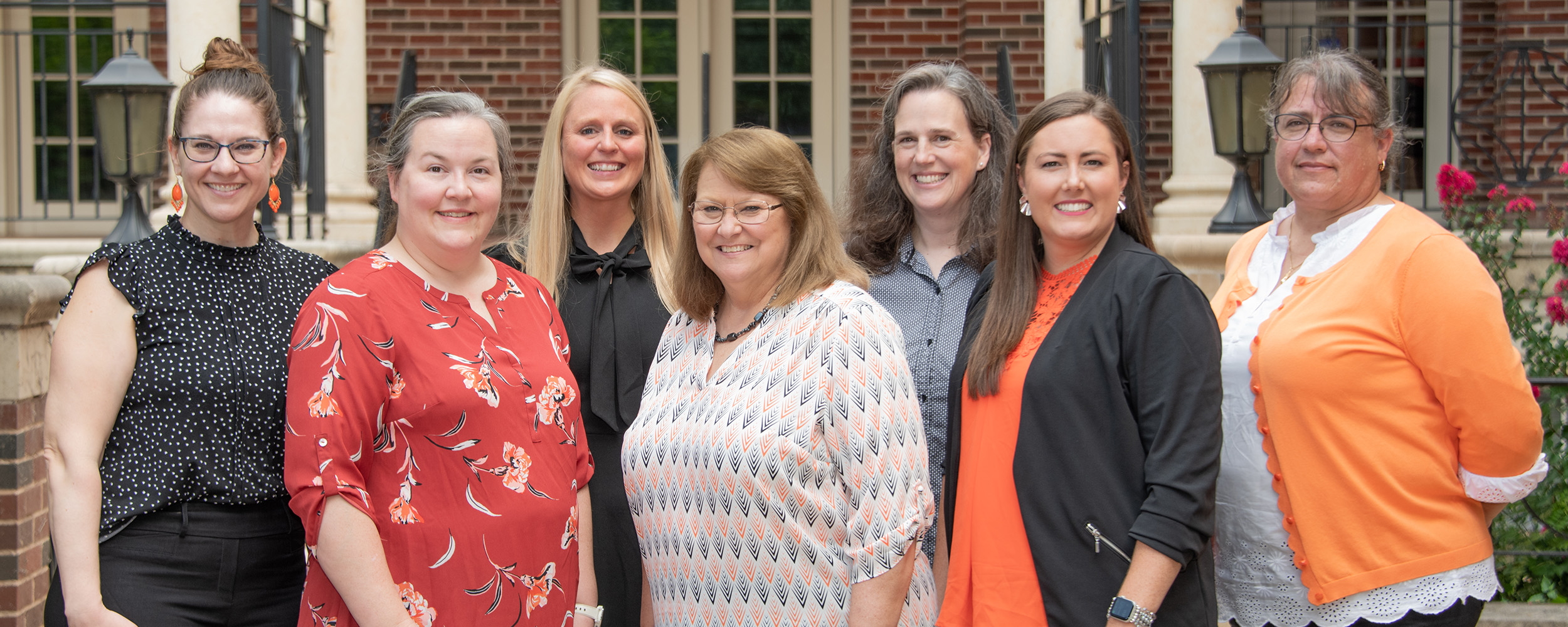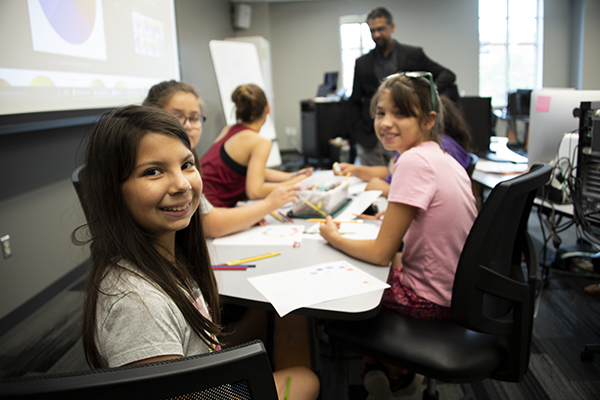
Involving Native American Communities
Thursday, November 4, 2021
Media Contact: Christy Lang | Marketing and Communications Manager | 405-744-9740 | christy.lang@okstate.edu
NASA-OSU program aims to open minds to earth and space science by adding cultural elements to curriculum
Native American communities, storytelling and earth and space curriculum are coming together in one ambitious project made possible through a $3.3 million NASA cooperative agreement with Oklahoma State University’s College of Education and Human Sciences.
Funding from NASA’s Science Activation program is uniting three of Oklahoma’s Native American communities with OSU professors to develop a new curriculum on earth and space science, technology, engineering and math (STEM) lessons.
 Dr. Kat Gardner-Vandy, assistant professor of aviation and space, is the principal
investigator of the program. Gardner-Vandy believes this is among the first formal
earth-sky curricula to meet state standards while highlighting Oklahoma’s diverse
Native American culture.
Dr. Kat Gardner-Vandy, assistant professor of aviation and space, is the principal
investigator of the program. Gardner-Vandy believes this is among the first formal
earth-sky curricula to meet state standards while highlighting Oklahoma’s diverse
Native American culture.
“Our goal is to work with individual nations and collaborate with them,” said Gardner-Vandy, a member of the Choctaw Nation of Oklahoma. “In Native American culture, it’s important to include elders, the community as a whole, culture and language into education efforts.”
The program, titled “STEM Pathways for Native Americans: Bridging Native Knowledge of Earth and Sky with Traditional STEM Programming through the ‘Native Earth-Native Sky’ Program,” will incorporate Native American stories related to earth and space science into middle-school STEM curriculum, which will first be tested in a summer camp format, then become available online as an open educational resource.
“In a traditional curriculum, there is often a very Westernized way of looking at science,” Gardner-Vandy said. “It might include the scientific method and an experiment, but it won’t incorporate storytelling and language. Our Native Earth-Native Sky curriculum will incorporate all these things. It will look like STEM, language arts and social studies together.”
This is the first time Oklahoma has been home to one of NASA’s Science Activation programs. Gardner-Vandy is working alongside three OSU co-investigators: Dr. Kalianne Neumann, assistant professor of learning, design and technology; Dr. Toni Ivey, associate professor of science education; and Dr. Juliana Utley, professor of mathematics education. Neumann brings expertise in educational technology, especially in managing Google classrooms, while Ivey specializes in creating curriculum and mentoring teachers in teaching STEM. Utley has led many professional development programs at OSU for teachers, and Gardner-Vandy is an earth and planetary scientist. The program will also work with OSU’s Center for Sovereign Nations as well as with researchers at the University of Alaska Fairbanks and the Smithsonian Institution.
“By adding that Native American culture and language into our curriculum, we’re including Native American communities in the conversation.”
- Kat Gardner-Vandy, Assistant Professor of Aviation and Space
OSU has had a strong history of working with NASA and currently leads NSPACE (NASA
STEM Pathway Activities — Consortium for Education). Distinct from the Science Activation
program, NSPACE is a series of 16 innovative activities designed to serve students
ranging from kindergarten to graduate school. Dr. Susan Stansberry, OSU professor
of learning, design and technology, estimates NSPACE activities reach more than 337,000
students and 82,000 educators across the United States. Gardner-Vandy plans to expand
on that legacy.
“One of the main reasons Native Americans are so underrepresented in science and engineering fields has a lot to do with culture and community,” Gardner-Vandy said. “By adding that Native American culture and language into our curriculum, we’re including Native American communities in the conversation.” Gardner-Vandy hopes to use her passion for planetary science as a catalyst to capture Native American students’ curiosity and expand possibilities and frontiers in science and engineering fields while building on OSU’s land-grant mission.
“When you start talking about what’s happening, say, on Mars or the moon, everyone gets excited to learn more,” Gardner-Vandy said. “As a land-grant institution, we are here to serve Oklahoma’s communities, and what better way to do that than by collaborating with Oklahoma’s Native American nations in celebration of the earth and space?”
Story By: Christy Lang and Brittany Bowman | College of Education and Human Sciences
